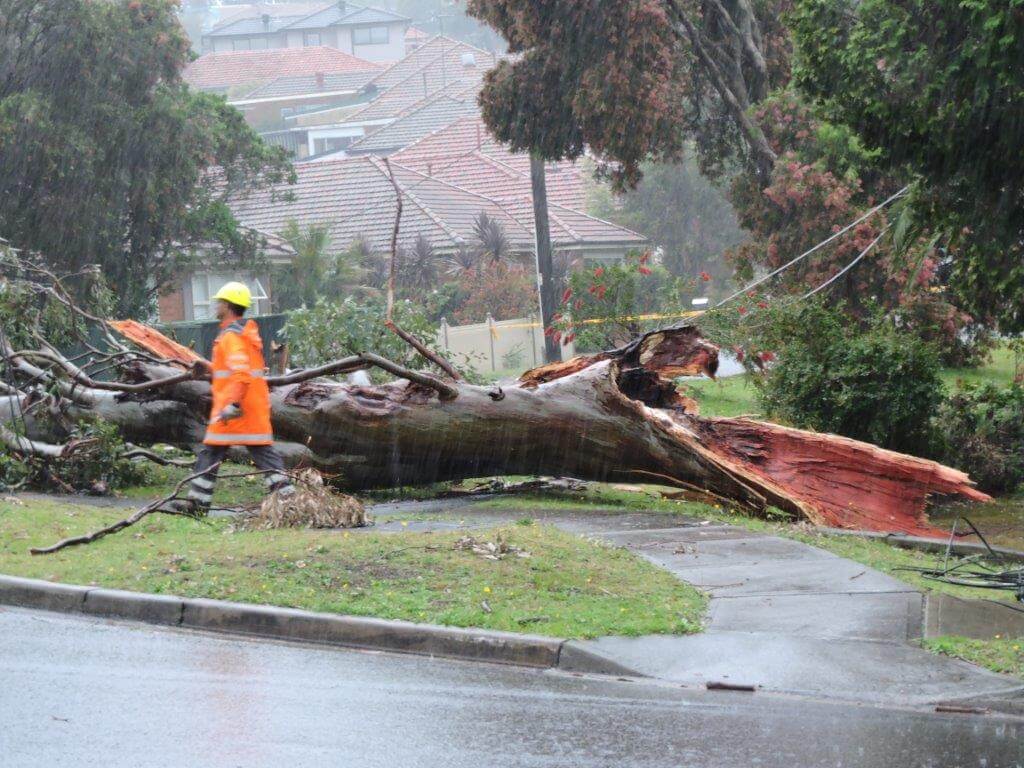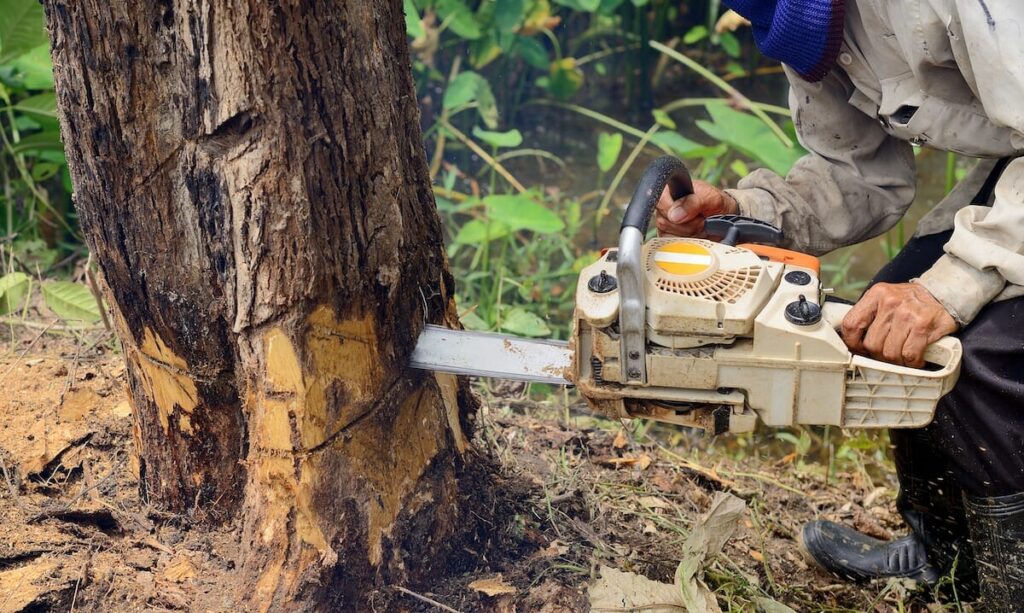Tree removal is a necessary and often costly endeavor for homeowners and property owners. The cost of tree removal can vary significantly depending on several factors. Understanding these factors can help you better comprehend the expenses associated with removing a tree from your property and plan accordingly.
Understanding the Basics of Tree Removal
What is Tree Removal?
Tree removal refers to the process of cutting down and completely removing a tree from its location. The tree removal cost involves various techniques and equipment to safely and efficiently remove the tree, including cutting, hauling, and disposal.
Before the actual cutting process begins, arborists carefully assess the tree to determine the best approach for removal. Factors such as the tree’s size, location, and surrounding structures all play a crucial role in planning the removal process. Once a strategy is in place, skilled professionals use specialized tools like chainsaws, ropes, and rigging equipment to safely bring down the tree in sections, minimizing the risk of damage to nearby property. Click here for comprehensive guide to palm tree removal techniques.
Why is Tree Removal Necessary?
There are several reasons why tree removal may be necessary. Diseased or dead trees pose significant risks, as they can fall during storms, causing property damage or personal injury. Removing trees that have grown too close to buildings or structures can ensure the safety and integrity of your property. Additionally, when trees become overcrowded, removal may be necessary to promote healthier growth in the remaining trees.
Furthermore, invasive species of trees can threaten the biodiversity of an ecosystem, outcompeting native plants and disrupting the natural balance. In such cases, selective tree removal is essential to preserve the health and diversity of the local flora and fauna. By carefully planning and executing tree removal processes, arborists not only enhance the safety and aesthetics of an area but also contribute to the overall health of the environment.
The Size of the Tree and Its Impact on Cost
How Tree Size Affects Removal Process
The size of the tree plays a crucial role in determining the complexity of the removal process. Larger trees require more extensive equipment and manpower to cut and remove safely. Additionally, the removal of larger trees may involve specialized techniques such as crane-assisted removal.
Moreover, the size of the tree can also influence the disposal process after removal. Larger trees produce more debris, which may require additional resources for hauling and disposal. The logistics of handling and disposing of a large volume of tree waste can add to the overall cost of the removal project.

Calculating Cost Based on Tree Size
When calculating the cost of tree removal, the size of the tree is a significant factor. Tree removal professionals may base their pricing on the tree’s height, diameter, or circumference. In general, the larger the tree, the higher the removal cost.
In addition to the physical dimensions of the tree, its species and condition can also impact the overall cost of removal. Certain tree species may have wood that is harder to cut through or branches that are more prone to breakage, requiring extra care and specialized equipment. Similarly, a tree that is diseased or structurally compromised may necessitate more intricate removal techniques to ensure safety, further influencing the cost of the project.
The Role of Tree Location in Determining Cost
Accessibility and Its Effect on Price
The accessibility of the tree significantly impacts the overall cost of removal. If the tree is located close to buildings, power lines, or other obstacles, additional precautions and specialized equipment may be required. These factors can increase the complexity of the removal process and subsequently affect the cost.
Furthermore, trees that are situated in urban areas with high foot traffic or near sensitive structures like historical buildings may require permits or permissions for removal. The process of obtaining these approvals can add to the overall cost and time involved in tree removal. In some cases, the need to work around these restrictions can also lead to delays and increased expenses.
Risks Associated with Tree Location
The location of the tree can also increase risks during the removal process. For example, trees situated on slopes or in areas with limited space may require skilled maneuvering and additional safety measures. Such factors can contribute to higher removal costs.
In addition, trees located in close proximity to water bodies such as rivers or lakes may pose environmental risks during removal. Special care and precautions need to be taken to prevent any debris or chemicals from contaminating the water source. This environmental consideration can lead to additional costs for implementing protective measures and ensuring compliance with regulations.

The Condition of the Tree and How It Affects Cost
The Impact of Tree Health on Removal Cost
The condition of the tree, including its health and structural integrity, can influence the cost of removal. Trees that are diseased, infested, or structurally compromised may require more careful handling and disposal. The additional precautionary measures necessary for removal can contribute to higher costs.
How Tree Stability Influences Cost
Unstable trees, such as those with significant lean or extensive root decay, pose higher risks during the removal process. Removing these trees safely might involve additional measures like using guide ropes or employing cranes. The increased complexity of the removal process due to tree stability issues can result in higher costs.
Moreover, the location of the tree can also impact the cost of removal. Trees situated near power lines, buildings, or other structures require skilled arborists and specialized equipment to ensure a safe removal process. Factors such as limited access to the tree or nearby obstacles can further complicate the removal, potentially leading to increased costs.
Environmental Considerations and Cost
Another crucial aspect that affects the cost of tree removal is environmental considerations. Trees located in environmentally sensitive areas, such as near water bodies or protected wildlife habitats, may require adherence to specific regulations and guidelines. The need to mitigate potential environmental impact during the removal process can add to the overall cost.
The Influence of Local Regulations on Tree Removal Cost
Understanding Permit Requirements
In some cases, local regulations or homeowner association rules may require permits for tree removal. These permits often come with their own costs and processes. It’s important to familiarize yourself with the necessary permits and associated fees before undertaking any tree removal activities.
Local regulations regarding tree removal can vary widely depending on the area. For example, some cities may have strict guidelines on which species of trees can be removed and under what circumstances. Homeowner associations may also have specific rules in place to preserve the aesthetic value of the neighborhood. Understanding these regulations is crucial to avoid any potential fines or legal issues.
Costs Associated with Regulatory Compliance
Complying with local regulations and permits can introduce additional expenses. Costs may include obtaining the necessary permits, conducting environmental assessments, or hiring certified tree removal professionals. Ensuring regulatory compliance can be essential to avoiding legal issues and penalties.
Furthermore, some areas require replanting or mitigation measures after tree removal to maintain the ecological balance of the environment. These additional costs should be factored into the overall expenses associated with tree removal. It’s important to consult with local authorities or arborists to understand the full scope of requirements in your area.In conclusion, several factors influence the cost of tree removal. Understanding the basics of the removal process, considering the size and condition of the tree, assessing its location, and accounting for any necessary permits and compliance costs can help you better estimate the expenses involved. By taking these factors into account, you can make informed decisions and effectively plan for the removal of trees on your property.
Other resources to learn about: Aluminium is an important strategic material for Europe

